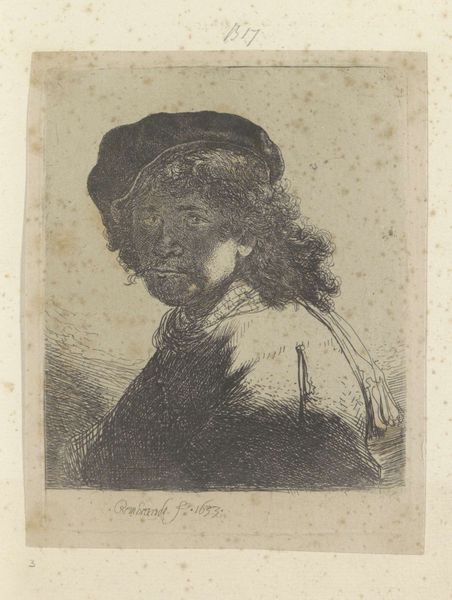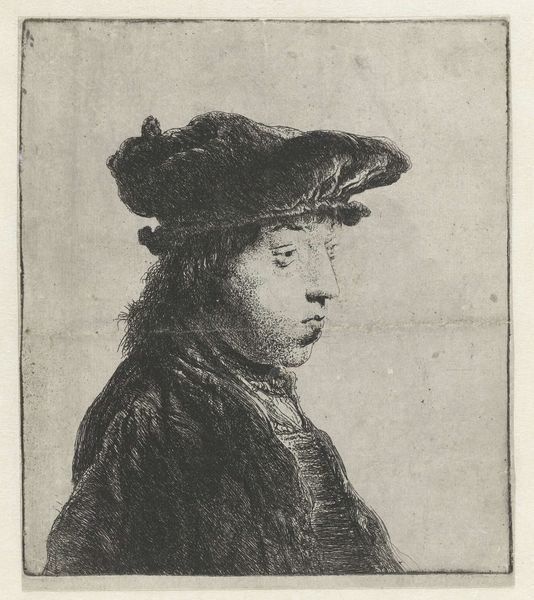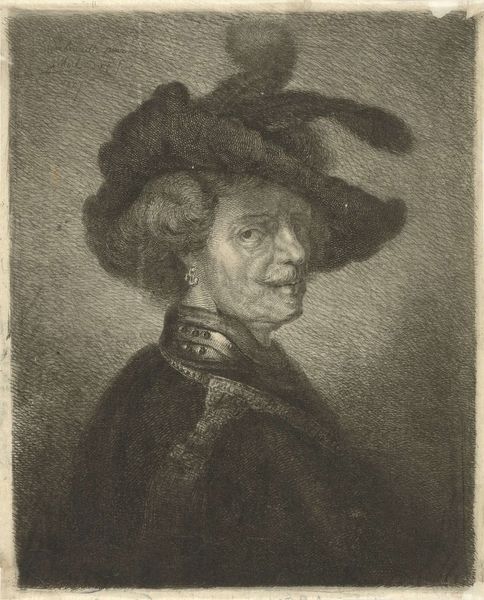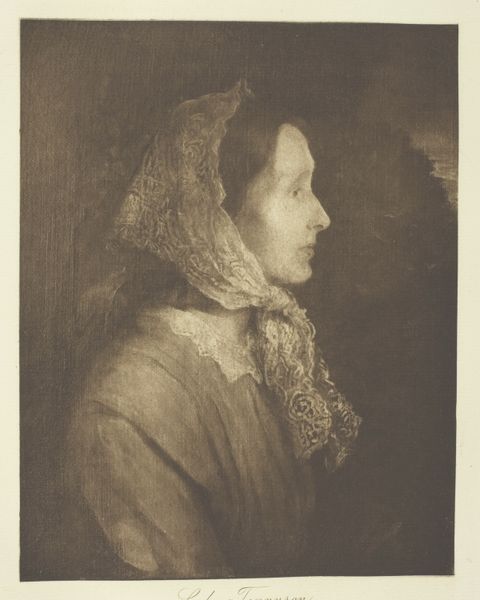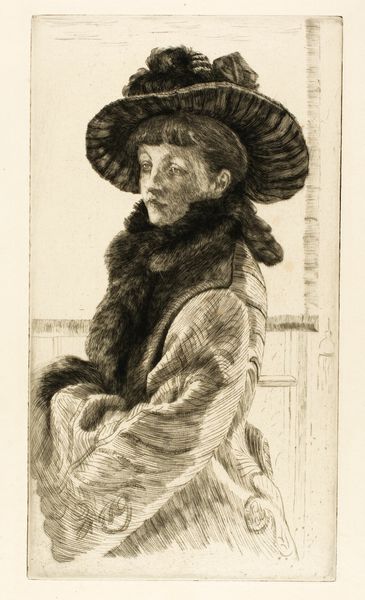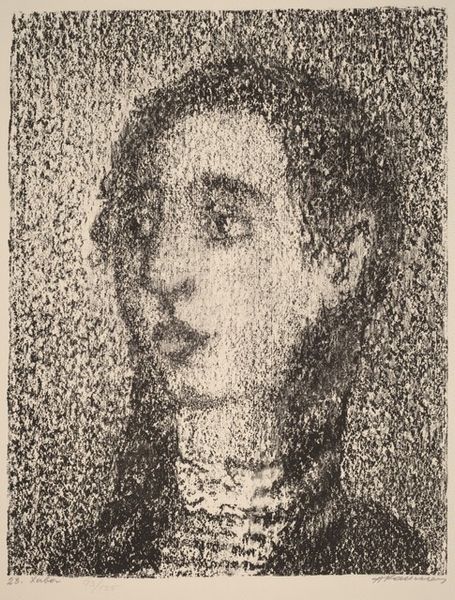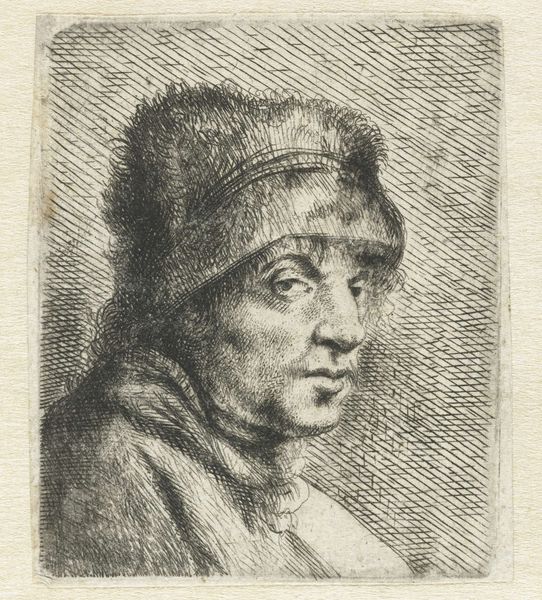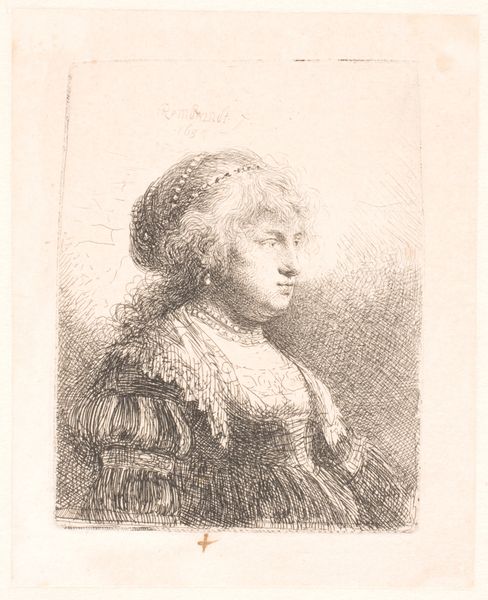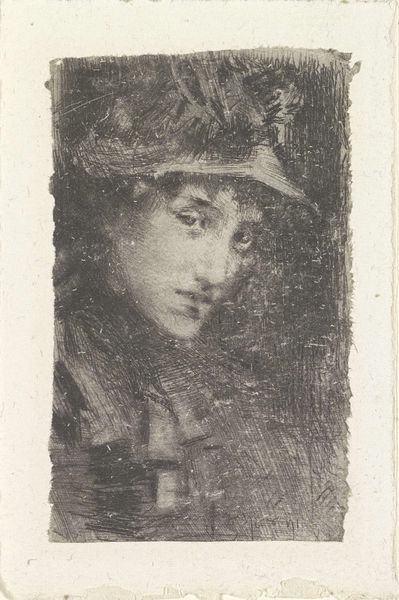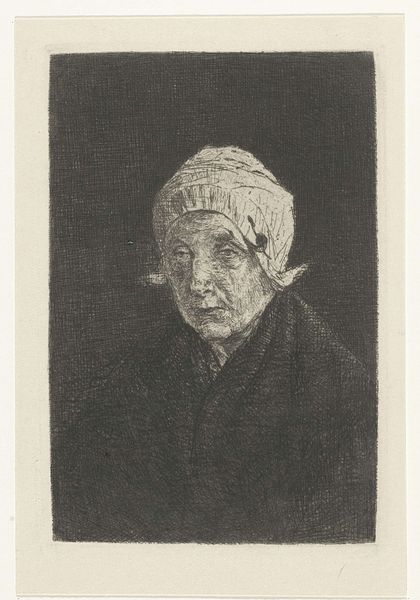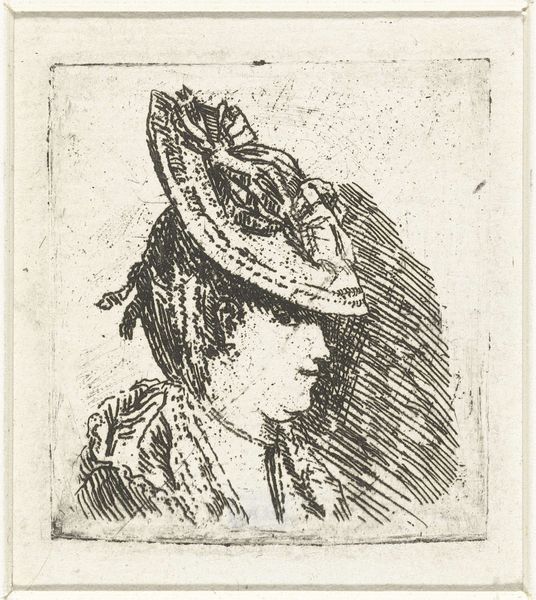
aquatint, print, etching
#
portrait
#
aquatint
# print
#
etching
#
portrait drawing
Dimensions: 129 mm (height) x 91 mm (width) (plademaal)
Curator: Oh, I find this image so evocative! There’s an almost palpable tenderness here, don't you think? Editor: It's undoubtedly intimate, but there's a formality, a historical distance that tempers the intimacy. This is "Kunstnerens moder", the Artist's Mother, by Oluf Hartmann, created in 1907. Hartmann has captured his mother's likeness using aquatint and etching, techniques lending themselves to this chiaroscuro effect. Curator: Chiaroscuro is right! It’s so shadowy, and the detail is so…almost loving. Look at the lines around her mouth, suggesting years lived, stories untold. But her profile, sharply defined, is somehow resilient. You can feel a profound connection. Editor: Indeed. Hartmann's choice of printmaking allowed for wider circulation of this maternal image, moving it from the private sphere to a broader audience. This print allows us, the viewers, access to not only the subject's likeness, but also offers some understanding of the dynamics within a bourgeois Danish family at the turn of the century. The original now resides at the SMK, Statens Museum for Kunst. Curator: It makes you wonder about the conversations they had, doesn’t it? Was she supportive of his artistic pursuits, a silent muse, or perhaps a critical voice? You can almost hear the echo of their relationship in these strokes. I keep seeing her stoic, turned away. It feels like the edge of memory itself. Editor: Considering that Denmark saw significant shifts during that period – the rise of social democracy, cultural debates on national identity – I find myself contemplating her potential socio-political role as well. A mother of an artist in 1907 wouldn't have lived in a vacuum, and Hartmann’s choice to depict her contributes to a certain social narrative, imbuing it with artistic legitimacy. Curator: Art lending legitimacy...of course, it is her portrait as an older woman, rendered not so much in photorealism but in the feeling of a specific lived existence. Perhaps he sought to eternalize her—to preserve the fleeting beauty of lived experience. Editor: That feels right. I do think framing art in terms of those types of personal sentiments overlooks other possible cultural impacts this image could produce, as Hartmann created this using techniques that enabled this art to travel far beyond familial circles. Curator: Well, perhaps it is also in art historical inquiry, beyond familial sentiment, where she travels as well, now and again rediscovered by eyes of new beholders such as our own. Editor: Exactly. An encounter, layered through history.
Comments
No comments
Be the first to comment and join the conversation on the ultimate creative platform.

